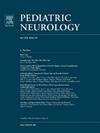美国二级和三级新生儿重症监护病房新生儿癫痫发作治疗方法比较。
IF 3.2
3区 医学
Q2 CLINICAL NEUROLOGY
引用次数: 0
摘要
背景:新生儿癫痫发作(NS)是重症婴儿的一种重要临床表现,通常是潜在脑损伤的首发症状。早期识别和治疗对降低发病率和死亡率至关重要。本研究调查了美国 II/III 级新生儿重症监护病房(NICU)采用的 NS 管理和治疗方法,以确定存在共识和差异的领域:通过电子问卷直接调查了 II/III 级新生儿重症监护病房的相关人员。直接询问了神经病学专家的使用情况、现场脑电图(EEG)监测以及抗癫痫药物的使用情况。共有 51 家新生儿监护病房参与了此次调查:接受调查的新生儿重症监护室中有 25% 称已制定了治疗 NS 的临床实践路径。24%的新生儿重症监护室表示已制定书面指南,对 "新生儿癫痫发作 "的概念进行了正式定义。尽管大多数新生儿重症监护病房都报告说有苯巴比妥可用于快速控制癫痫发作,但大多数新生儿重症监护病房都无法获得更多的抗癫痫药物用于治疗升级。在接受调查的新生儿重症监护室中,有 24% 的监护室没有现场脑电图监测设备。神经科顾问的日间和夜间接诊时间有限且不固定:结论:调查结果显示,NS 治疗缺乏公平性。潜在的改进领域包括制定和实施快速治疗 NS 的方案,该方案强调加强脑电图监测和快速神经内科会诊,承认并改进资源限制。这些发展最终可能会为新生儿癫痫发作提供更早的检测、评估和治疗,从而改善长期预后。本文章由计算机程序翻译,如有差异,请以英文原文为准。
A Comparison of Treatment Practices for Newborn Seizure Management Across Level II and III Neonatal Intensive Care Units in the United States
Background
Neonatal seizures (NS) represent an important clinical manifestation among critically ill infants and are often the first sign of underlying brain injury. Early recognition and treatment are essential to reduce morbidity and mortality. The present study investigated the NS management and treatment approaches employed by level II/III neonatal intensive care units (NICUs) across the United States to identify areas of consensus and variability.
Methods
Personnel associated with level II/III NICUs were directly surveyed with an electronic questionnaire. Access to neurology specialists, on-site electroencephalography (EEG) monitoring, and use of antiseizure medications was directly queried. A total of 51 NICUs participated in this survey.
Results
Twenty-five percent of the surveyed NICUs reported having an established clinical practice pathway available for treating NS. Twenty-four percent endorsed having written guidelines that provided a formal definition for the concept of “neonatal seizures.” Although the majority of NICUs reported having phenobarbital available for rapid seizure management, most NICUs lacked access to additional antiseizure medications for treatment escalation. Twenty-four percent of the surveyed NICUs had no access to EEG monitoring available to them on-site. Daytime and overnight access to neurology consultants was limited and variable.
Conclusions
Findings were consistent with a lack of equitable access for NS treatment. Areas of potential improvement include development and implementation of a protocol for rapidly treating NS that emphasizes enhanced access to EEG and rapid neurology consultation, acknowledging and improving upon resource limitations. These developments may eventually provide earlier detection, evaluation, and treatment of seizures in newborns, contributing to improved long-term outcomes.
求助全文
通过发布文献求助,成功后即可免费获取论文全文。
去求助
来源期刊

Pediatric neurology
医学-临床神经学
CiteScore
4.80
自引率
2.60%
发文量
176
审稿时长
78 days
期刊介绍:
Pediatric Neurology publishes timely peer-reviewed clinical and research articles covering all aspects of the developing nervous system.
Pediatric Neurology features up-to-the-minute publication of the latest advances in the diagnosis, management, and treatment of pediatric neurologic disorders. The journal''s editor, E. Steve Roach, in conjunction with the team of Associate Editors, heads an internationally recognized editorial board, ensuring the most authoritative and extensive coverage of the field. Among the topics covered are: epilepsy, mitochondrial diseases, congenital malformations, chromosomopathies, peripheral neuropathies, perinatal and childhood stroke, cerebral palsy, as well as other diseases affecting the developing nervous system.
 求助内容:
求助内容: 应助结果提醒方式:
应助结果提醒方式:


